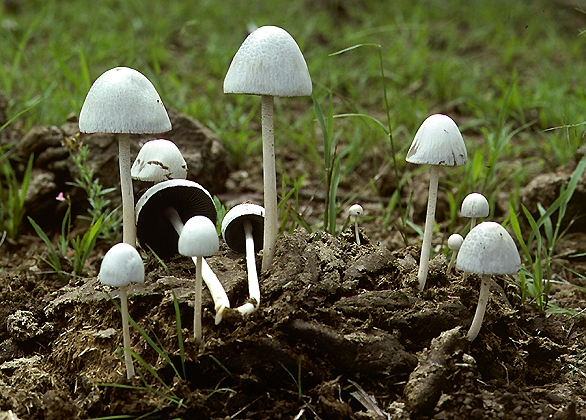
Panaeolus antillarum (Fr.) Dennis
Common name: None.
Description: The caps may reach up to 5.5 cm in diameter and are parabolic and pure white or silver-grey, often with brownish discolorations at the centre. At first a little viscid, they soon become quite dry and shiny, but old caps may be quite wrinkled, cracked or even warty. The gills are at first pale grey, but they become a mottled sooty grey and finally black. Usually the gill margins are whitish and very finely serrate. They are ascendingly attached to the stem but are often fully adnate at the top. The stems are 610 cm long and usually 0.51 cm thick, white, dry, very finely pruinose and often show sooty deposits from the released spores. There is no ring on the stem.
The spores are 1519 × 812 µm, ellipsoidal but hexagonal in face view, smooth with a germ pore and deep bronze in colour. The spore print is black.
Substratum: Panaeolus antillarum occurs on horse or cow dung, often in small troops.
Distribution: Known from Queensland, New South Wales, Victoria and South Australia.
Notes: Panaeolus antillarum is not a true forest fungus, but it occurs on the droppings of cattle and horses that intrude into many forest areas. The fungus is very common in pasture areas of Australia and occasionally has been eaten in error for edible species. Reports of its toxicity are conflicting: it is not hallucinogenic, but it probably causes gastrointestinal irritation leading to nausea and vomiting and/or pain in at least some people. It should not be eaten.

